QuestionQUESTION: Hello, we have a Texas Spiny Lizard who we thought was ill and took to the vet a week ago. Turns out, he's not sick but instead exhibiting breeding behavior (stretching his neck upwards and being very still, doesn't move around, haven't seen him eat). He is about 2 years old, we've had him since he was very small. His habitat is a 55 gallon tank, complete with a reptile light. He is fed crickets, but the vet recommended to add meal worms as well. My questions are: how long will he be in this state, should we buy him new crickets, and will his eyes be okay, since he doesn't open them and they almost look stuck. The vet that saw him has these lizards as well, and said he was healthy. Any information you can give me would be much appreciated! Thank you!
ANSWER: Hi Valerie,
There are much more insects he should be offered so as to provide variety in his diet. Offering different foods may spike his interest in eating. Here is a link to a bit more on their needs.
http://www.anapsid.org/swifts.html
Breeding season is generally early spring and eggs are laid in the summer, so you should see him attitude start to change in a month or so. Some tend to stay in breeding mode longer though. Do keep him well hydrated as that is actually more important than food.
On his eyes..that concerns me as some lighting can cause eye problems. If you are using one of the "bad" uvb sources, once its changed, the eye problem will correct(if that's the cause of it). You can wipe his eyes with some sterile saline solution(like for contact lenses). The vet will need to prescribe an eye ointment as I don't think there are any over the counter ones for reptiles.
You say reptile light but I want to make sure that its a proper uvb producing light. Here is some info I wrote on uvb.
LIGHTING:
Supplying uvb can be done in a few ways. By special lights
that come in fluorescent tubes or special screw in bulbs
(mercury vapor)that are designed to produce uvb and heat.
The tubes do not produce heat. UVB is needed by the reptile to be able to absorb the calcium in the foods they eat.
With out the uvb, they will develop metabolic bone disease.
With the tubes, they must say that they produce BOTH uvb and
uva. The uvb needs to be 5% or higher. Repti Sun 10.0 and the Repti Glo 8.0's are a great source for uvb. The old "favorites" are the repti sun 5.0 or the Iguana light..which are the same tube, just different package.
There are tubes that say ''full spectrum'' but they do not produce any uvb.
These need to be positioned 6-8 inches over the reptile for the 5% and 8% and 8-10 inches for the 10% so
that they get the uvb that is needed. The tubes need to be replaced every 6-9 months as that they stop producing UVB long before they stop producing light.Using a fixture that holds two uvb tubes of at least 3 feet in length will provide adequate uvb for your iguana. There has been new studies that have proven that compact uvb lights, both the spiral/coil type and the ones that look like long "U's" laying on their side and a few other brands are causing what basically amounts to snow blindness in reptiles. To read more on this, you can go to http://www.uvguide.co.uk/index.htm
On the mercury vapor , they also produce heat. They also
produce the uvb and uva. The best on the market now are the
Mega Rays.(http://www.reptileuv.com) The distance from these are greater than the uvb tubes and the directions must be followed that
are listed for the light. When using the mercury vapor
lights, you don't need to have one light for uvb and one for
heat. The Mercury vapor lights provide both.
For daytime heat, if using the tube uvb, regular household
incandescent light bulbs produce heat as does reptile basking lights. The wattage will
depend on the size of your reptiles enclosure. and the room temperature.Of course, the best uvb is from the
sun and if you are in an area that you are able to take your reptile outside in a proper enclosure, (Never a tank or enclosed, solid cage)
---------- FOLLOW-UP ----------
QUESTION: Thank you so much! We're on our way to buy a new bulb right now, as this one is more than 6-9 months old. One follow-up: should he be eating while in this state? He looks thin. Thanks!
AnswerHi Valerie,
For the money, and the size of your tank, I wouldn't rush out and get a new tube without looking into purchasing one of the Mega Ray or the MV bulb from T-Rex. With those, you have one tube that provides both heat and uvb.
Some eat when they are in breeding mode..others don't. Sometimes, taking them outdoors in the real sunshine will help jump start their wanting to eat. Also, since he hasn't been eating, his gut bacteria that is needed for digestion may be low so you can boost it with
bene bac...labeled for birds, approved for reptiles.
nutri bac
acidolophliz+
or plain, human grade acidolophus...... one capsule will dose for at least 3 days in a row.
BeneBac ..most larger pet stores should carry it...especially if they have birds...
Acidophiliz+ I think PetsMart carries it..if not....on line at www.reptilesupply.com
Some people use a tiny amount(1/2 cc or less) of live culture plain yogurt for 2-3 days, but this is only something that is recommended for healthy lizards.
You can try hand feeding him (with plastic tweezers)or if really needed. You can blend some insects and offer with a syringe.
There is a product called "CRITICAL CARE" which can be purchased at www.calvetsupply.com Not sure if there is one for insectivores.
Also, you can ask your vet about offering some baby food veal or chicken from a syringe.Do offer diluted pedialyte or gatorade from a syringe though to keep in hydrated.

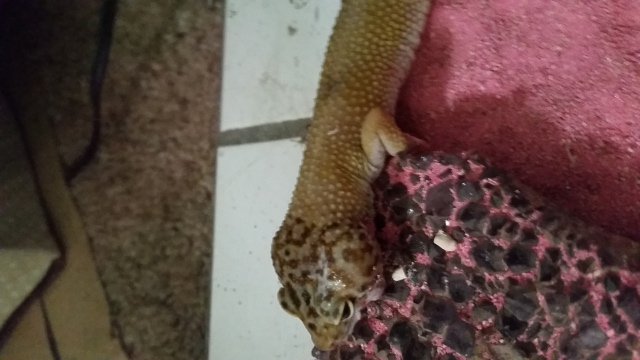 gecko
Questiongecko
QUESTION: Hello Tracie yes my geck
gecko
Questiongecko
QUESTION: Hello Tracie yes my geck
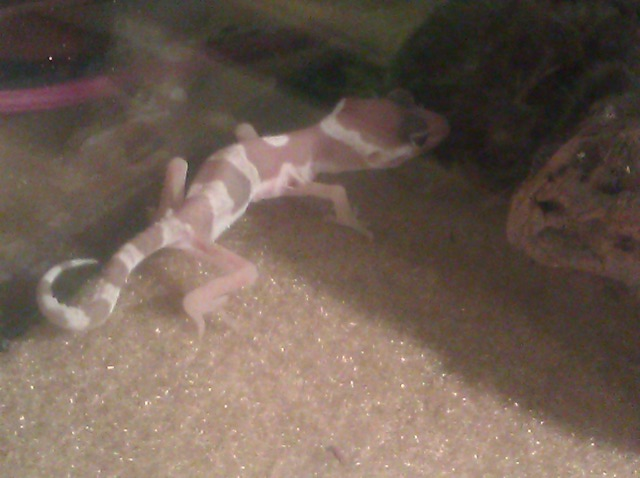 Baby Leo SICK
Question
Leo SICK
I just recently bought a
Baby Leo SICK
Question
Leo SICK
I just recently bought a
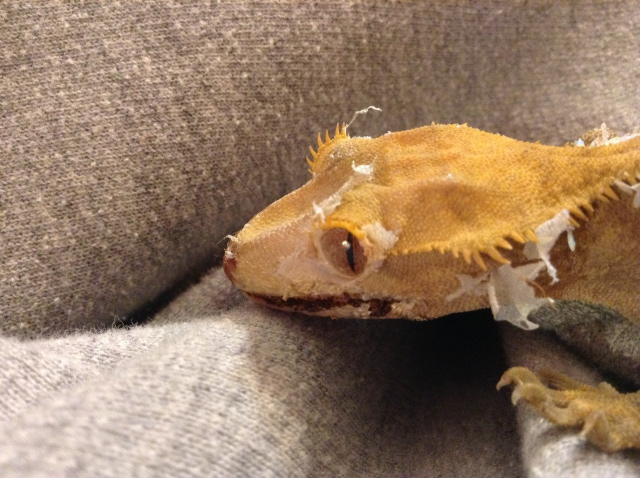 Crested gecko illness
Question
Crested gecko
My crested gecko looks re
Crested gecko illness
Question
Crested gecko
My crested gecko looks re
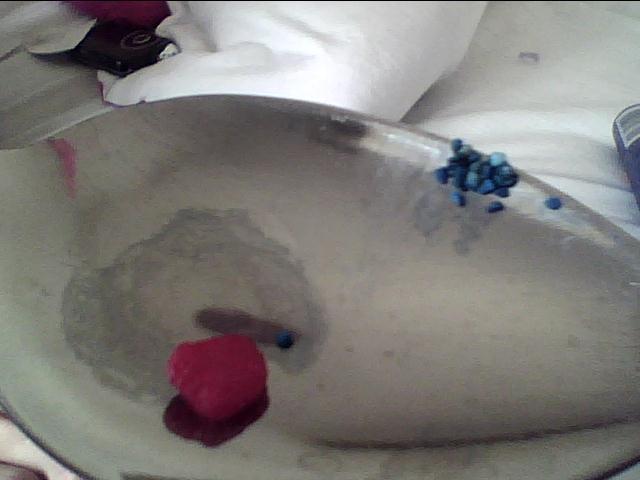 Red crystals????
QuestionRed crystal
QUESTION: Im really worried
Red crystals????
QuestionRed crystal
QUESTION: Im really worried
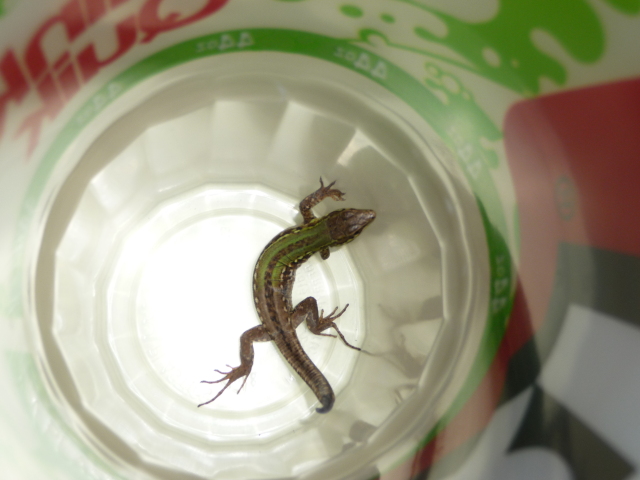 uncommon lizard?
Question
Topeka Lizard
Hello, I live in Topeka, KS - an
uncommon lizard?
Question
Topeka Lizard
Hello, I live in Topeka, KS - an